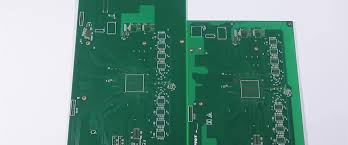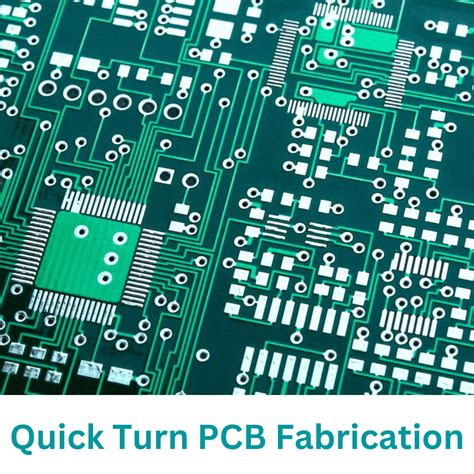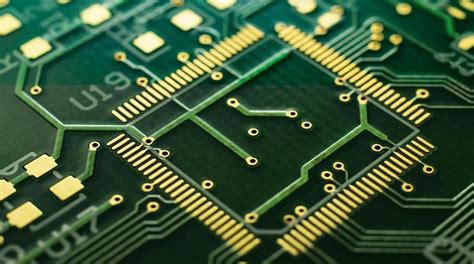The Future Development Directions of Mechanical Integration in PCB Design
Abstract
This paper explores the emerging trends and future development directions of mechanical integration in printed circuit board (PCB) design. As electronic devices continue to shrink in size while increasing in functionality, the integration between mechanical and electrical design becomes increasingly critical. The article examines five key development areas: 3D printed electronics, flexible hybrid electronics, embedded component technology, advanced materials integration, and intelligent mechanical design tools. Each direction is analyzed for its technical challenges, current progress, and potential impact on the PCB industry. The convergence of these technologies promises to revolutionize how PCBs are designed, manufactured, and integrated into final products.
1. Introduction
The printed circuit board has served as the foundational platform for electronic systems for decades, traditionally providing the electrical interconnection between components. However, as products demand higher performance in smaller form factors, the distinction between electrical and mechanical design is blurring. Mechanical integration in PCB design refers to the holistic approach where mechanical and electrical considerations are addressed simultaneously throughout the design process.
This paradigm shift is driven by several market demands:
- Miniaturization of electronic devices
- Increased functionality per unit volume
- Requirements for improved reliability under mechanical stress
- Need for faster time-to-market with complex products
- Demand for more sustainable manufacturing processes
In this context, we examine five promising directions for mechanical integration development in PCB technology.
2. 3D Printed Electronics
2.1 Current State of Technology
Additive manufacturing techniques are transforming PCB production by enabling three-dimensional circuit structures that were previously impossible or prohibitively expensive to manufacture. 3D printed electronics combine conductive and insulating materials in a single printing process, creating circuits with unique mechanical properties.
2.2 Integration Advantages
- Topology Optimization: Ability to create optimal material distribution for both mechanical and electrical performance
- Embedded Components: Direct integration of passive components within the board structure
- Complex Geometries: Circuits that conform to non-planar surfaces or include internal cavities
- Reduced Assembly: Fewer discrete parts through monolithic construction
2.3 Development Challenges
- Material properties (conductivity, dielectric constant) of printable inks
- Resolution and accuracy compared to traditional fabrication
- Long-term reliability under mechanical stress
- Scalability for mass production
2.4 Future Outlook
The convergence of multi-material 3D printing with advanced simulation tools will enable designers to create PCB structures optimized for both electrical performance and mechanical requirements. Hybrid approaches combining traditional PCB manufacturing with 3D printed elements may emerge as an intermediate step.
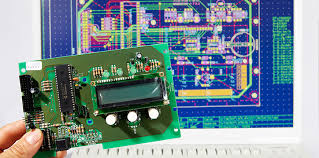
3. Flexible Hybrid Electronics (FHE)
3.1 Technology Overview
Flexible hybrid electronics combine printed flexible circuits with conventional silicon-based components, creating systems that can bend, stretch, or conform to irregular shapes while maintaining electronic functionality.
3.2 Mechanical Integration Benefits
- Conformal Designs: Circuits that match product contours rather than requiring dedicated flat spaces
- Dynamic Flexing: Reliability under repeated bending or stretching motions
- Lightweight Construction: Reduced material usage compared to rigid boards with mechanical supports
- Improved Durability: Better resistance to vibration and mechanical shock
3.3 Current Limitations
- Component attachment methods for flexible substrates
- Thermal management in constrained flexible formats
- Signal integrity in dynamically flexing circuits
- Testing and inspection challenges
3.4 Research Directions
Next-generation FHE development focuses on:
- Stretchable interconnects with maintained conductivity
- Thin-film components that maintain performance when flexed
- Advanced encapsulation methods for environmental protection
- Self-healing materials for improved reliability
4. Embedded Component Technology
4.1 Embedded Passive and Active Components
The practice of embedding components within the PCB substrate rather than mounting them on the surface provides significant mechanical advantages while saving space.
4.2 Integration Benefits
- Reduced Profile: Lower overall product thickness
- Improved Reliability: Protection from physical damage and environmental factors
- Better Thermal Performance: Direct heat conduction paths through substrate materials
- Enhanced Signal Integrity: Shorter interconnect lengths and reduced parasitics
4.3 Technical Challenges
- Thermal expansion mismatch between embedded components and substrate
- Repair and rework limitations
- Testing and inspection difficulties
- Thermal management of power-dissipating components
4.4 Future Developments
Advanced embedding techniques under development include:
- Laser-assisted component placement
- Adaptive alignment systems for high-density embedding
- Novel substrate materials with tunable properties
- Standardized embedded component interfaces
5. Advanced Materials Integration
5.1 Next-Generation Substrate Materials
The development of new PCB substrate materials with enhanced mechanical properties enables novel integration approaches:
- Ceramic-Polymer Composites: Combining the thermal performance of ceramics with the processability of polymers
- Metal-Core Substrates: For improved thermal management and structural rigidity
- Nanocomposites: Materials with tailored mechanical, thermal, and electrical properties
5.2 Structural Electronics
The concept where the PCB becomes a structural element of the product itself rather than just an electronic platform:
- Load-bearing circuit boards
- Integrated mechanical fastening features
- Combined thermal and structural management
5.3 Challenges in Material Integration
- Coefficient of thermal expansion matching
- Adhesion between dissimilar materials
- Manufacturing process compatibility
- Long-term material stability
6. Intelligent Mechanical Design Tools
6.1 Multi-Disciplinary Optimization
Advanced simulation and design tools that simultaneously consider:
- Electrical performance (signal integrity, power integrity)
- Thermal behavior
- Mechanical stress and vibration
- Manufacturing constraints
6.2 AI-Assisted Design
Machine learning applications in PCB mechanical integration:
- Predictive modeling of mechanical reliability
- Generative design for optimal material distribution
- Automated design rule checking for mechanical constraints
- Failure mode prediction based on mechanical loading
6.3 Digital Twin Technology
Virtual representations of PCB assemblies that:
- Simulate real-world mechanical conditions
- Predict fatigue and failure points
- Enable virtual testing of mechanical performance
- Provide feedback for design improvements
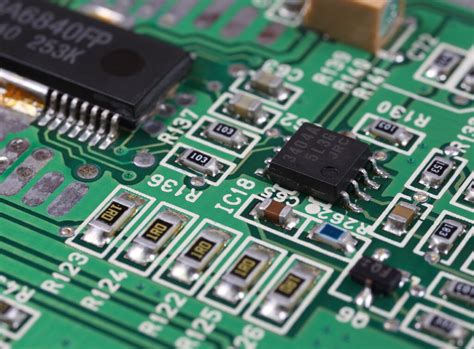
7. Conclusion
The future of mechanical integration in PCB design points toward a fully unified approach where electrical and mechanical design occur concurrently rather than sequentially. The five directions discussed—3D printed electronics, flexible hybrid electronics, embedded components, advanced materials, and intelligent design tools—are not mutually exclusive but rather complementary technologies that will likely converge in next-generation PCB solutions.
As these technologies mature, we can expect to see:
- Products with significantly higher levels of integration
- Improved reliability through optimized mechanical design
- Reduced time-to-market through advanced simulation
- New form factors enabled by mechanical-electrical co-design
- More sustainable products through material efficiency
The PCB of the future will not simply be a platform for electrical connections but an intelligent, multifunctional element that contributes to the overall mechanical, thermal, and even aesthetic performance of the final product. Companies that embrace these mechanical integration approaches will gain significant competitive advantages in product performance, reliability, and time-to-market.


